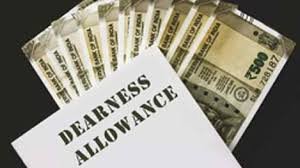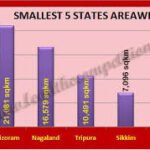Introduction
The Union Cabinet has approved a 2% increase in the Dearness Allowance (DA) for central government employees and pensioners, effective from January 2025. This decision aims to provide relief to employees by offsetting the impact of inflation. The hike aligns with the recommendations of the 7th Pay Commission and benefits millions of government employees and pensioners across the country.
Details of the DA Hike
The revised DA rate will increase from the existing percentage to the new rate, leading to an enhancement in monthly salaries and pensions. The increase will be applicable to over 47 lakh central government employees and approximately 68 lakh pensioners. The move is expected to boost consumer spending, thereby stimulating economic growth.
Impact on Government Employees and Pensioners
- Financial Relief: The hike in DA will help employees cope with rising prices of essential goods and services.
- Higher Pension Benefits: Pensioners will receive a corresponding increase, ensuring financial security post-retirement.
- Positive Economic Impact: Increased purchasing power will contribute to demand in the market, benefiting various sectors.
How DA is Calculated?
Dearness Allowance is calculated based on the All India Consumer Price Index (AICPI), which reflects inflation trends. The DA percentage is revised biannually, considering cost-of-living adjustments.
Government’s Commitment to Employees
The Indian government periodically revises DA to support employees against inflation. This decision reflects the government’s continuous efforts to improve the financial well-being of its workforce and retired personnel.

Why This News Is Important?
Significance for Government Job Aspirants
Competitive exams like UPSC, SSC, Banking, and State PCS often include questions about government policies affecting employees. Understanding DA revisions is crucial for aspirants.
Impact on Economic Growth
The increased DA leads to higher disposable income, which boosts market demand and economic activity.
Inflation and Cost of Living Adjustments
The revision is directly linked to inflation control, ensuring that employees’ salaries retain their purchasing power.
Historical Context
Evolution of DA in India
The concept of Dearness Allowance was introduced during World War II to adjust wages according to inflation. Over the decades, it has evolved, with periodic revisions under different Pay Commissions.
Previous DA Hikes
In recent years, DA hikes have ranged between 2% to 4%, depending on inflation trends. The government revises DA twice a year, in January and July.
Key Takeaways from DA Hike for Government Employees
| S. No | Key Takeaway |
|---|---|
| 1 | The Union Cabinet approved a 2% DA hike for central government employees and pensioners. |
| 2 | The hike is effective from January 2025 and aligns with inflation trends. |
| 3 | Over 47 lakh employees and 68 lakh pensioners will benefit from the increase. |
| 4 | The increased DA will positively impact consumer spending and economic growth. |
| 5 | The government revises DA biannually to ensure salaries keep pace with inflation. |
FAQs: Frequently Asked Questions
1. What is Dearness Allowance (DA)?
Dearness Allowance (DA) is a cost-of-living adjustment allowance paid to government employees and pensioners to offset the impact of inflation.
2. How often is DA revised?
The DA is revised twice a year, in January and July, based on inflation trends and recommendations from the Pay Commission.
3. Who will benefit from the latest DA hike?
Over 47 lakh central government employees and 68 lakh pensioners will benefit from the latest 2% DA increase.
4. What is the role of the Pay Commission in DA revision?
The Pay Commission recommends salary and allowance adjustments, including DA, based on inflation and economic conditions.
5. How does DA impact economic growth?
Increased DA leads to higher disposable income, which boosts consumer spending and contributes to economic growth.
Some Important Current Affairs Links


















 Exciting News!
Exciting News!  Join Our Telegram Channel Now!
Join Our Telegram Channel Now!
 Join our Telegram channel for a thrilling adventure into the world of daily current affairs.
Join our Telegram channel for a thrilling adventure into the world of daily current affairs. 
 Don’t miss out on the latest updates and insights! Click to join now and be part of the knowledge revolution!
Don’t miss out on the latest updates and insights! Click to join now and be part of the knowledge revolution! 
